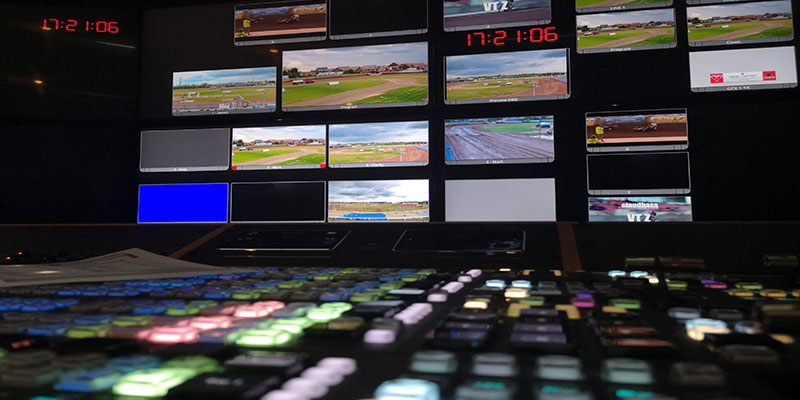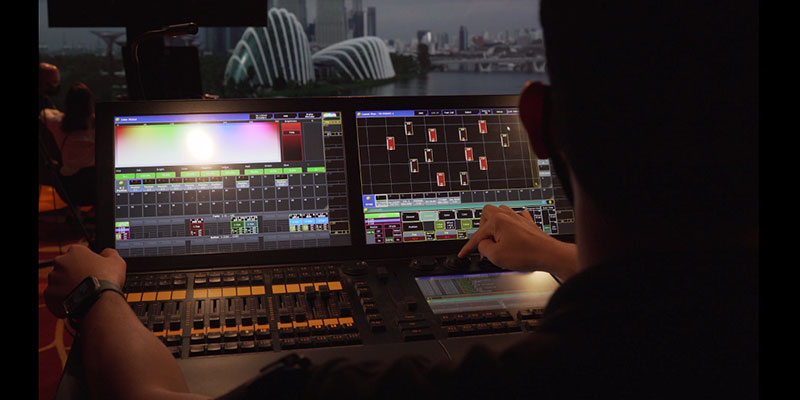BCS Stories
All IP or hybrid SDI? The fight is on!

The pandemic-fueled shift to remote working has changed the emphasis of IP migration, although it is clear that SDI will continue to play an important role in broadcast for years to come.
As with other facets of the broadcast industry, it is likely that the pandemic will ultimately be seen to have brought both positives and negatives when it comes to connectivity and networking. On the negative side, there is a widespread view that, due to a combination of practical challenges and financial pressures, there has been a slowing down of major upgrade projects, many of which would have involved IP networking implementation. On the positive side, the case for IP as a facilitator of remote production and more flexible working patterns has been underlined in these days of social distancing.
But in making these observations, it is important to also make the distinction between compressed and uncompressed workflows. In terms of the trajectory, some of the larger infrastructure projects have been somewhat delayed over the past year, so as far as uncompressed IP projects go the industry is perhaps slightly behind where it might have expected to be at this point. However, when it comes to compressed IP and public cloud deployments, there is no doubt that the pandemic has broken down some of the barriers and that IP has played a huge part in enabling remote workflows during this time.
The ability to integrate existing workflows and technologies with new devices and technologies as part of a managed transition – will continue to be appealing for some time yet.
Whatever happened to SDI?
Four or 5 years ago, an exhibitor at IBC booked a lot of poster spaces for a sticker that read, in very large letters, SDI must die. Well, that is one view. SDI is an incredibly successful interconnection technology. It has been adopted universally for digital video, and – within its limitations – it works very well indeed. It has served the industry for more than 30 years and has evolved over that time with a 40x increase in capacity.
Because of this, there is a vast wealth of equipment installed in production and delivery facilities around the world, which talks to other pieces of equipment through these one-signal-per-wire coaxial SDI cables. SDI equipment works.
The industry continues to live in a world built from SDI bricks. Consequently, several companies have evolved ranges of video networking solutions that allow customers to use both SDI and IP, and to undertake migration to the latter at a pace with which they are comfortable.
The broadcast industry is in an interesting period of transition regarding the shift to IP. Of course, there have been early adopters who are very tech-driven and have really jumped on IP as being something they wish to implement in a large-scale way. But there are also plenty of companies which realize that a hybrid infrastructure can work very well for them.
Cameras and displays are among the equipment types for which SDI remains in heavy use. An SDI-centric approach can still be the best choice for Tier-II or Tier-III operations where they may just have a small studio or installation and IP does not necessarily make sense on an expenditure level.
The pandemic will impact on the ability to overhaul technical infrastructures. Certainly, there will be broadcasters who are under pressure in terms of costs. Moreover, there is a momentum behind IP-based transportation in the wake of the SMPTE ST 2110 standards. There is still a way to go in terms of the whole control side of IP-based installations.
Establishing the ground rules
If a piece of equipment still has an ounce of life left in it, a broadcast engineer will not throw it out. SDI hardware – and SDI itself – still works.
Despite what some might say, the industry is not facing a war between the old guard of SDI and the new kids doing IP. Those kinds of words are attention-grabbers on the walls of busy convention centers, but this is not the reality on the ground. It is now time for the right conversation, about how SDI and IP fit into the future plans.
While sometimes the term IP is used for convenience, what it really means is equipment and architectures conforming to the SMPTE ST 2110 standard. ST 2110 is the future because it is an agreed standard that the industry has comprehensively backed, and it has been proven through hundreds of high-profile projects.
Also read : SDI OR IP for Broadcasting

The media infrastructure evolution
So, if SDI works, what drives a need for IP/2110 in media infrastructures? It is an enabling technology: a new tool for doing things that stretched the bounds of SDI historically.
SDI works well within its limitations. It handles signals up to HD (1080p) very well, with excellent cable reach and plenty of fiber options. Beyond that, there are limitations—12G SDI for UHD is a great interconnection within a rack or a flypack, but the reach is a bit shy for a big facility. Additionally, the scalability of 12G SDI routing systems is limiting for a large facility. As content production and distribution evolves into UHD and HDR at scale, SDI will not do it for us without causing problematic workarounds.
The nature of SDI cross point routing has some built-in breakpoints. If there is a designed system around, say, a 288×288 SDI router, then as sure as the sun rises in the morning, someone will discover a pressing need for a 289th source. Once again one is facing workarounds and production limitations. Then someone will need a 290th source, and so on. Meetings are held and shouting matches happen over the allocation of router ports in an SDI facility.
One of the widely acclaimed benefits of SDI is that it carries audio embedded in it, so it stays together and stays in sync―which is fine in parts of the media workflow where the audio is actually tightly bound to the video. But in production, the audio is just as often produced separately, and then reunited with the video right at the end of the chain.
So, in the production workflow, one has to add a stage that pulls the audio streams out of the video, maps them into (typically) MADI transport and takes them out to the audio room. Mixing and merging alongside all the other audio processes happens there, and then back through MADI to re-embed the audio streams (hopefully still in sync and only a little bit late) in every place where you need to hand off video with audio.
The complexity of embedders and de-embedders—the care, feeding and constant tweaking of delays—is the reality of daily life in production today. It is a source of unnecessary complexity that translates into errors and scaling challenges.
The IP trajectory is growing in a different way
The pandemic has definitely changed the short- to medium-term focus on IP in a central facility to using IP for remote production or cloud production. So, the trajectory for IP is still growing but it is growing in a different way to the way it would have.
Invited to consider the project types where IP is now considered a default choice, 512 squared is a number people are using as a rule of thumb – and businesses where scalability is highly valued. IP allows for scaling up facilities much easier than SDI, which is important as consumers have an insatiable appetite for content.
Companies are introducing encoders and decoders, which are based around standard IT hardware and have native support for uncompressed IP. These receive uncompressed IP and compress them to transport streams, and also receive transport streams and decompress them to uncompressed IP.
As the events of the last year have unfolded, there has been a growth in remote production and a willingness to experiment with workflows. This has led to an acceleration in the use of these technologies across the industry.
Also read : A major transition to IP happening during pandemic
Delivering across platforms
Talking of online, any new production facility will not just be creating and delivering material to a linear broadcast channel. Viewers expect to be able to watch over-the-air or on the device (and resolution) of their choosing, either as it happens or whenever they want to watch. That means multiple outputs and multiple versions—and would have required an explosive growth of router ports in a traditional SDI workflow.
All said, for any new facility, one must guess what the future holds and then be reasonably ready for it. SMPTE ST 2110-based IP works today and passes the test of being reasonably ready for UHD, HDR and scale-up.
In SDI, equipment is frequently built into chains to reduce the number of router ports. But in an IP environment, everything connects through the switches, so every interconnection point is essentially a routing point—maintenance and sparing can become a route-around. Reorganizing to a new workflow is just routing.
At least it is when one has an ST 2110 architecture. Rather than being bound by a fixed number of crosspoints and a limited number of roads leading back to the router, they have a network topography that can reasonably grow and is bound by bandwidth, not switchports. The separation of video, audio, timing and data signals sharing a common fabric enables each device to only get the signals it needs for a given job.

Even greenfields are not entirely green
Every operation today needs to have an opinion about UHD and how they could do it. Special projects can crop up that will likely require UHD or HDR at some point soon. Special projects beget special channels, and soon the experiment becomes the requirement. Recent global events have caused some delay, but it seems inevitable that one day, some sports rights-holders or high-profile events will insist on coverage in UHD and HDR. ST 2110 provides the infrastructure capability to meet the demand.
But here is the important point. As broadcast engineers, thinking ahead and anticipating the emerging requirements is part of the job—the idea of adding capabilities to existing infrastructures has always been at the heart of what we do. And that can still be done.
For greenfield projects, the scale and possibility of SMPTE ST 2110 architecture is manifest—but even greenfield sites are not entirely green. For economic reasons, even greenfield projects tend to bring in some legacy kit, e.g., a new set of studio cameras could might have been bought only a couple of years ago.
Greenfields are a luxury, not the norm—infrastructure refreshes and upgrades are the reality—and indeed a real necessity. A common approach is to add ST 2110 islands and beachheads as you redevelop your legacy architecture, gradually moving toward IP, but interconnected with the SDI plant of today. All this works perfectly well, because SMPTE designed ST 2110 to make interoperability reasonable with SDI.
Bridging the gap between IP and SDI
The war metaphor between SDI and IP was never appropriate. For the foreseeable future, it is likely that many solutions developers will be enabling the underlying shift toward IP while also accommodating the continuation of mixed IP/SDI environments.
Companies are focusing on the potentially complex problem of routing and switching IP signals around the broadcast facility or OB truck. Operated using web-based UIs, they are leveraging open standards to interface with NMOS-enabled devices from multiple vendors, and it is simple to reconfigure when interconnections change, or when devices are added or removed.
Hence, the proportion of hybrid is increasing, and perhaps to a greater degree than some broadcasters had initially planned – the number one reason being that if they have a lot of legacy equipment, they might not be in a position to abandon all of that and undertake a complete swap-over, which can be very expensive.
In the OB world especially, a lot of companies have been using the pandemic-related downtime to review their inventory and begin the next phase of their development. Once these projects start to reach fruition, the industry should have a clearer sense of how far and fast the migration to IP is going to proceed; for now, however, it is safe to assume that SDI will remain a core broadcasting technology for a long time to come.
Also read : The Transition From SDI To IP









You must be logged in to post a comment Login